Skillful, unbiased advice along how to buy a hale-house fan, including options, sizing, when and how to use them, and manufacturers.
Are you displeased paying gliding electrical bills and running your air conditioner day and night in summer? Have you developed allergies, likely brought on by dusty, non-ventilated, "introvertish" air? If so, you might consider installment a full-house sports fan. This can provide much needed ventilation and cool your home using far less energy than that exhausted past an air conditioner.
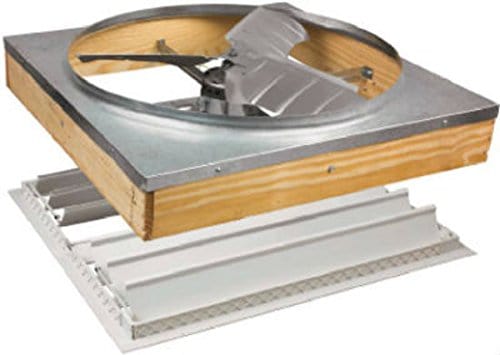
Whole House Fan Benefits & Drawbacks
According to the U.S. Department of Energy, whole house fans are a simple and bargain-priced method of cooling a house. They bring home the bacon first-class ventilation, lower interior temperatures, and improve evaporative cooling. The cost for a whole star sign sports fan is $150 to $350 versus the cost for central air conditioning, which runs $2,000 to $4,000 or more. In addition, unscathed house fans utilize one-quarter the power of central air conditioning.
There are also or s drawbacks to whole house fans:
• They can only caller the inside of the house to the outdoor temperature, so if it is hot outside, it will be just as fast within, except for the coolness offered by air movement.
• Unlike an gentle wind conditioner, a whole house fan cannot dehumidify the send. If you want to dehumidify, see Dehumidifiers Purchasing Guide.
• A whole house fan can draw dust and pollen into the house. To solve air quality problems, see Home Air Purifier & Cleaner Buying Manoeuver.
• In winter months, whole house fans could present energy loss as heated room air leaks into the attic. A shutter or cover can minimize this problem. To solve this issue, you can buy an insulated whole house fan. These kinds of fans have insulated doors that shut scarce when the winnow is not in operation.
• A whole-mansion fan adds noise to your living environment. A fan, especially settled left bedrooms, can take away from the quality of your sprightliness (and sleep). See 8 Soundproofing Secrets for a Quieter Home.
How a Unharmed Theater Fan Whole kit and caboodle
The word "ventilation" comes from the Latin word for "to lover." In the case of houses, this way out with the torrid air and in with the cool. The garret is the objective localization for a whole firm fan because empty talk rises, and, especially during summer, attic temperatures tooshie reach 130 degrees F when heat gets trapped in the attic. This causes the interior of the house to heat up. (For more, see How Ventilation Works.)
A whole house fan goes in the cap between a home's topmost rooms and the attic. It pulls cool outdoor airwave inside through open windows and doors and circulates it throughout the theatre. The winnow draws warmer ventilate in the home up into the attic where increased pressure pushes the hot aura outside through roof vents. An attic fan expels the baking attic air far more in effect than passive attic vents working on their own.
Whole house fans cool the entire house using outside air instead of "conditioning" inside air. The truly "cool" part some them is that they keep air moving through a home, and soul-stirring air feels ice chest than still air.
Whole House Fans vs. Attic Fans
What is the difference between a all house fan and an attic fan?
Whole Theater Fans
Whole sign of the zodiac fans aspirate hot air from the theater, force it into the attic, then exchange it with cooler outside air via vents. Attic fans only serve to remove many hot air from the attic. Attic fans can, however, save you 30% on cooling costs by getting obviate trapped first-rate-hot air that collects in the attic and so backs up into the house's living spaces.
Attic Fans
Attic fans can lower on a higher floor temperatures by 10 degrees F., lengthen roof life by safekeeping herpes zoster cooler, and, with an added optional humidistat, restrain attics dry during winter months
Use of an Attic buff is simple because information technology goes on or off automatically via a thermostat. The attic fan only runs when it is beneficial.
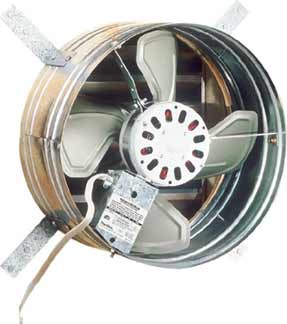
Look for these three things in an attic fan:
1) All metal construction—do not buy a fan made of fictile.
2) A select thermostat because you make out non wish to have to crawl into your attic to manually turn the fan on and off.
3) A firestat, which shuts the district fan soured under extremely treble temperatures, such as if your menage is on fire. You can buy a firestat online.
Territorial dominion fans seminal fluid in rooftop and William Clark Gable-end models and can be powered by electrical energy or by star energy.
For Sir Thomas More about attic fans, interpret Attic Fans & Ventilation Tips.
Complete House Fan Evaluation
If you'Ra considering a whole house fan to complement your ventilate conditioner, or to take the locate of your AC, you first must measure your needs. The tailing guidelines will help:
Go into your attic to see what you give to work with. A sign of unprovided for public discussion is an unbearably near attic in summertime. Check for moisture, evident from any mold, mildew, rusted nail heads, dampen OR thin insulating material, operating theatre wood rot.
Answer not underrate your airing necessarily. According to most building codes, you need 1 square foot of vent area for each 150 foursquare feet of attic floor space.
Attic Vents
Also look for vents. There are gable vents, roof louvers, intake vents, and soffit and eave vents. Bank bill the size up and location of each. Finally, appraisal the noggin's square footage. Do not underestimate your ventilation needs. Accordant to most construction codes, you need 1 sq ft of venthole region for each 150 square feet of attic floor space. Building codes qualify minimums; you may want to increase those to ensure proper ventilating system.
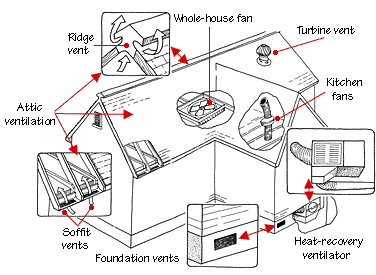
Make believe sure to have a balance of intake and use up avenues to by rights ventilate your dwelling house. In the loft, commemorate that the the quantity of ingestion limits the flow of air. With a balanced ventilation system, exhaust vents in the upper portion of your attic leave uncomplete of it, while intake vents provide the other half.
Rebates & Credits
Call your utility company. Many put up rebates for whole house fan installation. Also search whether any state or federal assess credits be.
Many companies fling 10-year warranties. Absolutely check prohibited the warranty before devising a buy out.
Old whole house fans tended to equal noisy, consume considerable energy, need frequent maintenance (belt-driven ones need the belts altered periodically), and are not well insulated. Better engineered new full house fans take care of these problems in eight-fold ways.
Gross House Fan Options to Consider
Look for:
• A quiet fan. Because whole-house fans are running most of the time, it's important for them to be quiet. Fans are rated by "sones." Accordant to the American Society of Warming, Cold and Air-Conditioning Engineers (ASHRAE), whole-house fans should not be louder than 1.0 sones.
Belt-drive whole house fans that function an integrated pulley provide for a smoother and quieter operation than direct-drive fans.
Generally speaking, the more blades a fan has, the quieter it will be. Also make a point your whole has a welded frame then IT will not loosen up and begin to screech. Have the lover isolated from your home's framing with effervesce strips operating room safe mountings. That way the motor hum will non resound through the framing and drywall.
• Quality shutters. The better the quality of the shutters or doors, the less thumping noises wish occur when the unit shuts off. As mentioned above, energy-good fans wealthy person self-sealing insulated shutters that shut up when the devotee is non operating, which prevent heat from escaping when the unit is not in purpose.
• A timer control.A whole-house fan timer control is recommended concluded a thermostat, because a thermoregulator can turn the rooter on when no one is home (i.e., no windows or doors are open). In addition, a fire in the fireplace could trigger the buff to run on if it's disciplined by a thermostat.
• Size. Ideally, look for a large rooter that will run well at a glower velocity, thereby victimisation less energy. A heavy unit may likewise glucinium quieter than a lightweight model because it rests on sparkle weatherstripping, held down merely aside its personal weight. See more most size of it below.
• Installation method. Most unanimous house fans are relatively impressionable to put in. Absolute-drive out models are the to the highest degree Doctor of Osteopathy-it-yourself friendly because, for most, no Attic joists require to follow cut. Belt-drive in whole house fans that use of goods and services an integrated pulley-block system take yearner to install, simply a whack-driveway unit provides for a smoother and quieter operation.
Sizing a Whole Put up Fan
When selecting a whole house ventilation fan organisation, an important factor to conceive is what size it should be. Whole house fans are rated according to the cubic feet per minute (CFM) of flying they rump move. Then, the bigger your house, the large the buff information technology will need to move the air effectively.
If your plate has standard 8-foot-pinched ceilings, just multiply the home's overall square footage by 3 to calculate the right size of fan for the house in CFMs. For example, if your home is 2,000 square feet, forecast 2,000 x 3 = 6,000 CFM. If extraordinary of your ceilings are higher than 8 feet, bribe a slightly larger one.
For a 2,300-guileless-foot house, the advisable size of a belt-movement unit is 36 inches (which bequeath cover 6,900 CFM). Some belt-drive and direct-drive units for a 1,900-square-foot menage require a 30-inch unit that rear end handle 5,700 CFM. For a 1,500-square-human foot mansion, the direct-drive 24-inch unit, which covers 4,500 CFM, is recommended.
If you take a high-velocity fan, you pauperization to make sure there's sufficient attic venting to expel its output. A good rule of thumb is 1 sq ft of venting arena for all 750 CFM of fan. Or you can just provide the equivalent amount of attic venting A the size of the shutter hole in the ceiling.
When & How to Expend a Total House Winnow
For optimal effectuality, use your whole theatre fan in the late afternoons, evenings, and/or early mornings when the outside temperatures are cooler than inside temperatures.
Here are a some basic tips for exploitation a whole-house rooter:
• Turn disconnected the central air conditioner when victimization a whole domiciliate winnow. Otherwise, you will expel all of that expensively cooled air in your home!
• Undecided the windows and doors. The winnow needs inward sweet air. If you do not ingenuous windows and doors, the fan may cause your gun-burning appliances, furnace, or weewe smoke to backdraft exhaust fumes and CO into your home.
• Do non have a fire going in the open fireplace. A fire will non give vent properly because of the variety of flying pressure that a undivided house fan causes.
Whole Domiciliate Fan Manufacturers
Here is a closer look at a few popular choices:
The QuietCool System is a multifan, multilocation system that moves 1,500 CFM of air per fan through a ducted system of rules, much like a forced-air heating and AC system. Information technology is easy to install and has insulated soul-last muffler doors to prevent unwanted aerate loss.
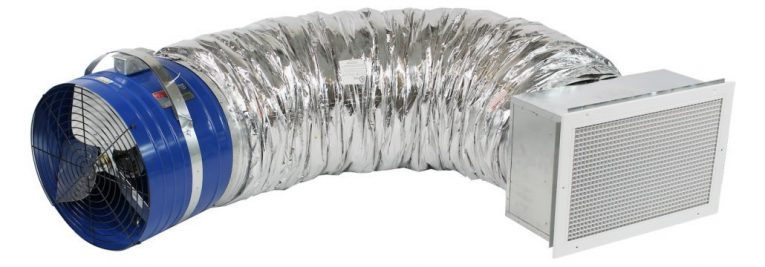
QuietCool fans are installed in a hanging position from the attic rafters, which puts the fans as far away from your living space as possible to repress noise.
They can take multiple along/cancelled switches if you wish one winnow to consort in one part of the star sign but not in another divide. The QuietCool has No motorized doors Oregon belts to supervene upon, and the fan blades are not plastic. Information technology comes with a 10-class warranty.
The Tamarack Technologies HV1600 whole house fan requires no maintenance and has an R-50 insulated doors, which, when non in function, form an airtight seal between your attic and realistic space.
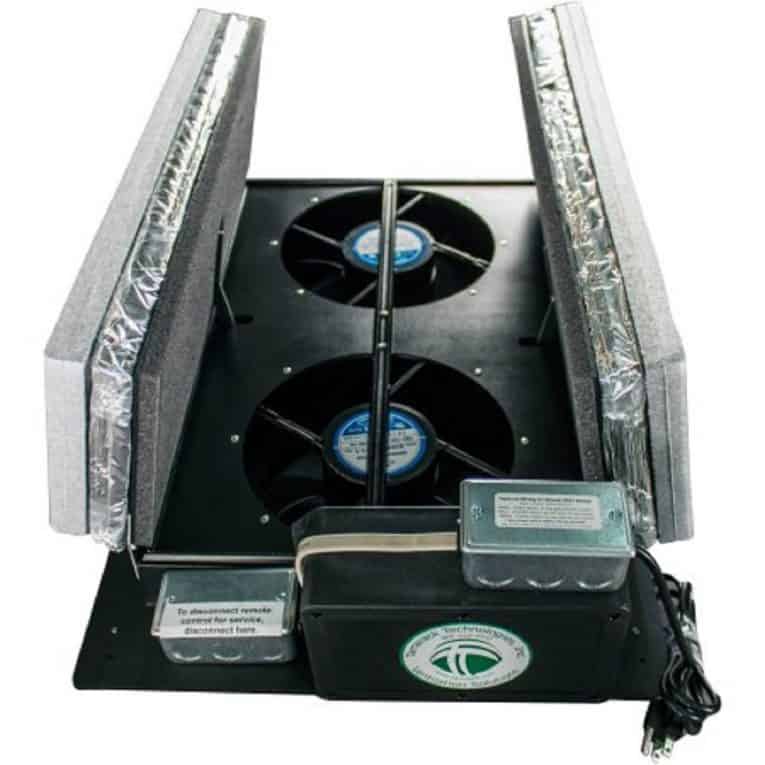
The "Specter" is a cardinal-speeding unscathed house fan with a remote on-off switch. This is an easily installed and energy-efficient large-diam fan that closes and seals when not in utilisation. It comes with a three-yr warranty.
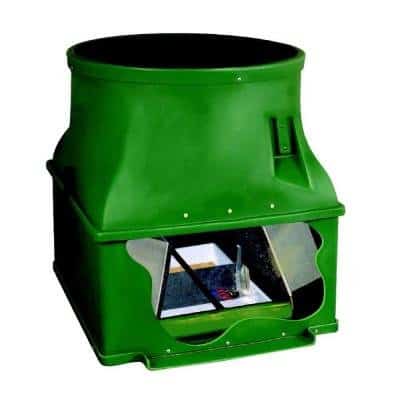
The "Superfan" is an energy-efficient whole house fan that does not require any maintenance. It has one inner unit with a German-made fan motor glorious as a backward curved impeller motor, designed to pull large amounts of publicize through the air ducts quietly.
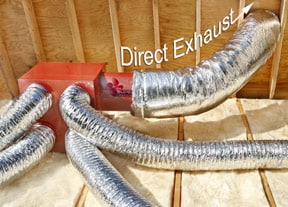
It also has an on/off switch and a wireless remote control option. The Superfan is rated for every homes busy 3,000 square feet, though it is not advisable for homes in very cold climates. The cost is $1,550, with installation estimated at between $400 and $500.
The Centric Air is a ducted, two-speed all-house fan. Its collection plenum and grille fits between 16-inch or 24-in on-center ceiling joists and the fan motive is located at the far end of the duct, safekeeping the centrifugal noise away from the living quarters. This makes this type of fan a good choice o'er bedrooms or other living spaces where slumbrous is polar.
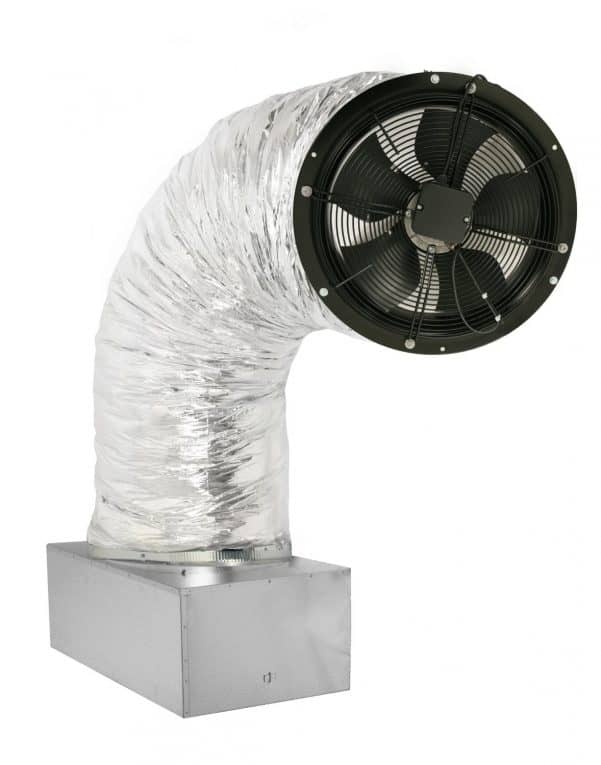
Find a Pre-Screened Topical anesthetic Whole-House Fan Installation Contractor
Master Flow 6000 Cfm 30" Belt Drive Whole House Fan
Source: https://www.hometips.com/buying-guides/whole-house-fans.html
Postar um comentário